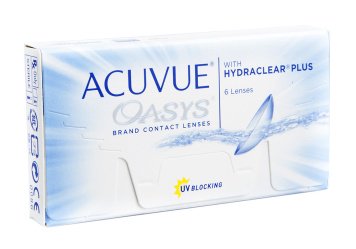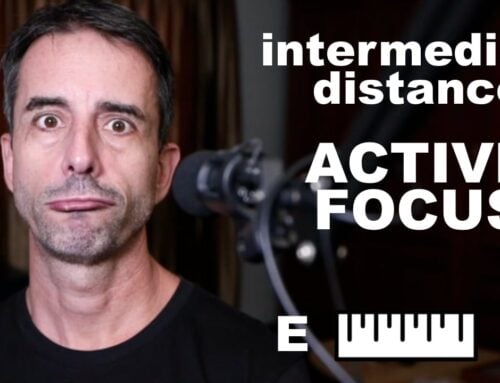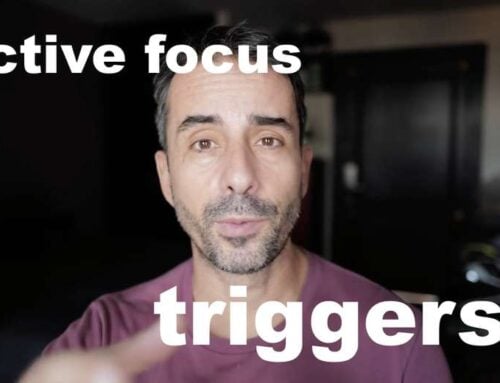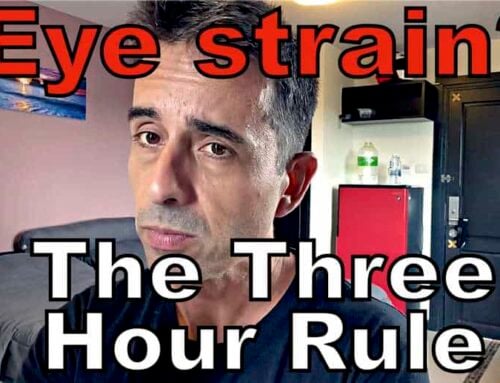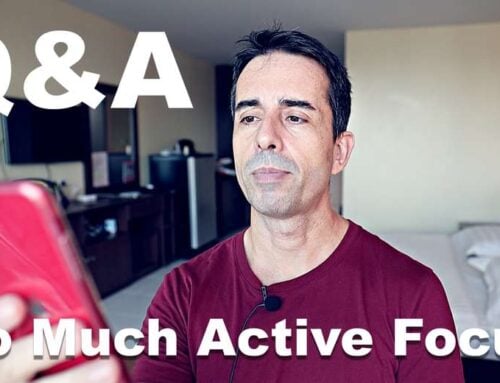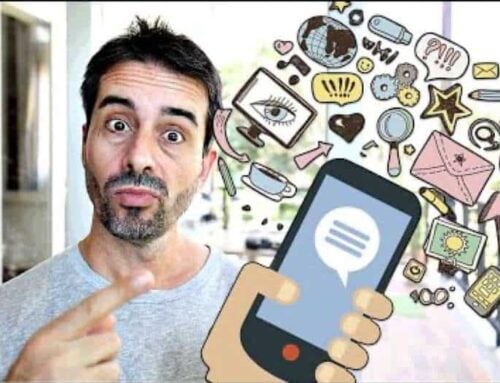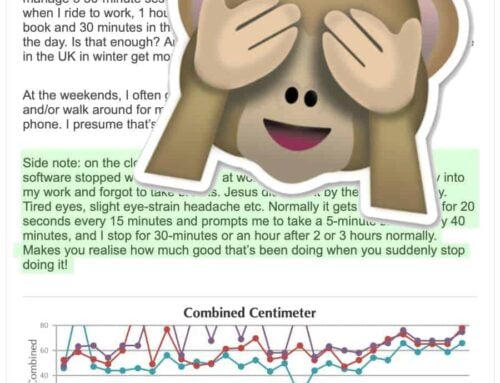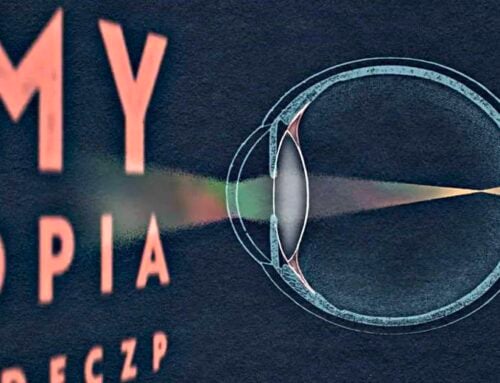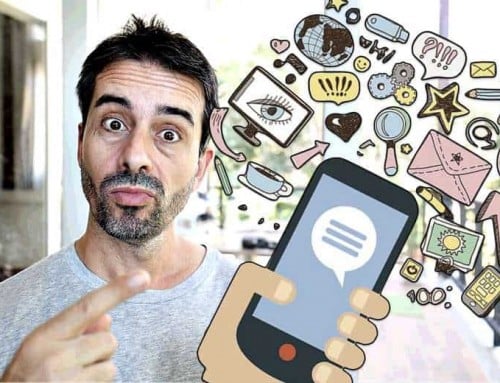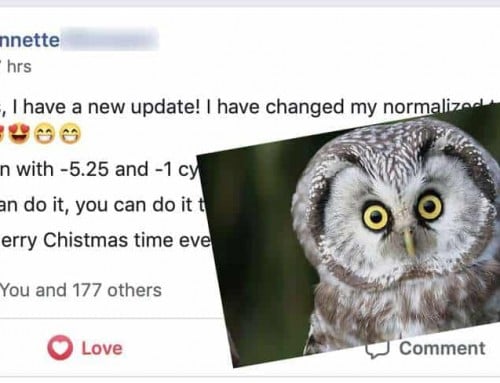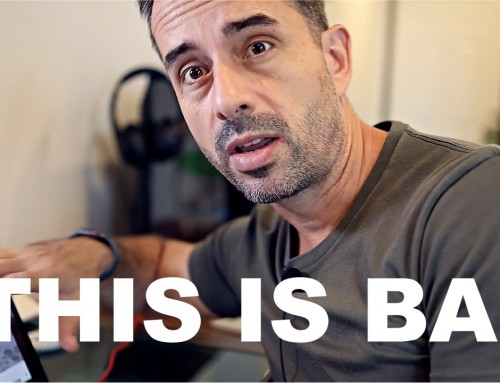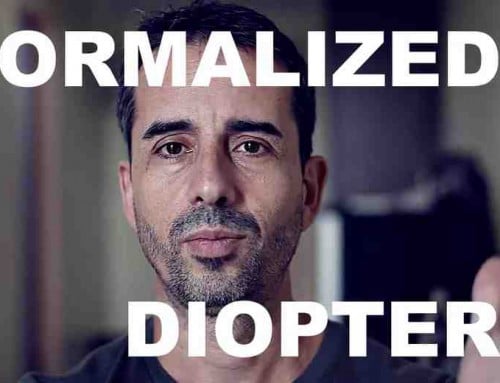In my experience athletes have a lower incidence rate of myopia than my desk-bound clients. This isn’t so much a surprise considering that close-up is a major contributor to both pseudo myopia and lens-induced stimulus as well.
But when an athlete becomes myopic, the impact can be much more traumatic than to most office workers.
These guys need razor sharp vision to gauge a ball’s trajectory or discern a muscle twitch before the next punch is thrown. To most of us eyesight is a bit of an afterthought. But your performance athlete can lose sleep over even the smallest degree of distance blur in their vision.
To deal with athlete myopia, I devised a number of strategies to stimulate focus.
The Blur Game
The long and short of it is that just like our myopia discussion here, it all boils down to degrees of blur, and efforts to bring objects into clear focus. An athlete has some great tools that we can leverage (flying balls automatically create a whole lot of active focus efforts). They also tend to be rather dedicated and already have a firm understanding of the dynamic nature of the human body.
While therapy varies based on the nature of the sport, the preferences of the athlete, and various other factors, I’ll give you an example you can use yourself.
Not how you want to see, while in the game.
Let’s say that there is just the smallest degree of distance blur, the sort of thing most people wouldn’t worry about. But you are looking down the court or down the field, and you can’t tell if your team mate is making eye contact with you. That’s the bit of myopia that worries you. And even if you just recreationally enjoy sports and have a bit of early myopia, these activities can be handy.
First, you want to exaggerate the blur problem. Like adding another stack of weights to your workout in the gym, the body needs to be “shocked” into action.
Plus Prescription Contact Lens Magic
For this, a small plus prescription can be very helpful. You probably have to custom order one, since a +0.50 isn’t going to be available in the local convenience store. This is also a good call for contact lenses (which tend to start off with a +0.50). They are cheaper (get an exam first to get the right size), they won’t interfere with athletic activities, and they give you good peripheral vision as well.
Now you want to partake in your usual sporting activity, wearing that plus contact lens. Trust me, it’s a challenging experience!
No blur, no gain.
You will probably want to adjust the sporting experience. Slower pitches, more casual game play, a lot of time the exercises that make up training can be taken up for this to really work with this lens handicap. Starting off with 20 minutes, working up to an hour over the course of a few weeks. Longer hasn’t shown to be helpful, and even an hour is quite a bit.
Once you covered the handicap time, you go back to playing without the lens. You want at least the same amount of time without than you had with, directly following the lens use.
Creating Action Out Of Blur Shock
I’ve found this to be massively effective. The whole system, your visual cortex is spurred into action by this sudden (but not excessive) reduction in acuity. You need this exaggerated change in focal plane to get the system to look at blur vs. clarity. Now without the lens you really want to push yourself. Further distance, checking all the usual required aspects as closely as possible. Can you see the player’s eyes? Is the ball clear?
Engaging focal planes can do wonders for visual acuity on the court.
We do this after covering the basics, quite similar to the course offered here. You still need to get active focus sorted first, have a month or so of practice, do some close-up work. Later on the double vision activities are also immensely helpful.
It would take a book to cover even one particular sport and rehab in detail. I have had fantastic results with well implemented rehab efforts, gains that start with the basics we just covered. Take advantage of these free concepts for your own vision improvement goals (I am compensated somewhat astronomically by several athletes, but I’m glad to share freely if it helps you). Hopefully above will give you some ideas, if you happen to just have the smallest bit of myopia, and are active in a sport.
Cheers,
– Jake Steiner



